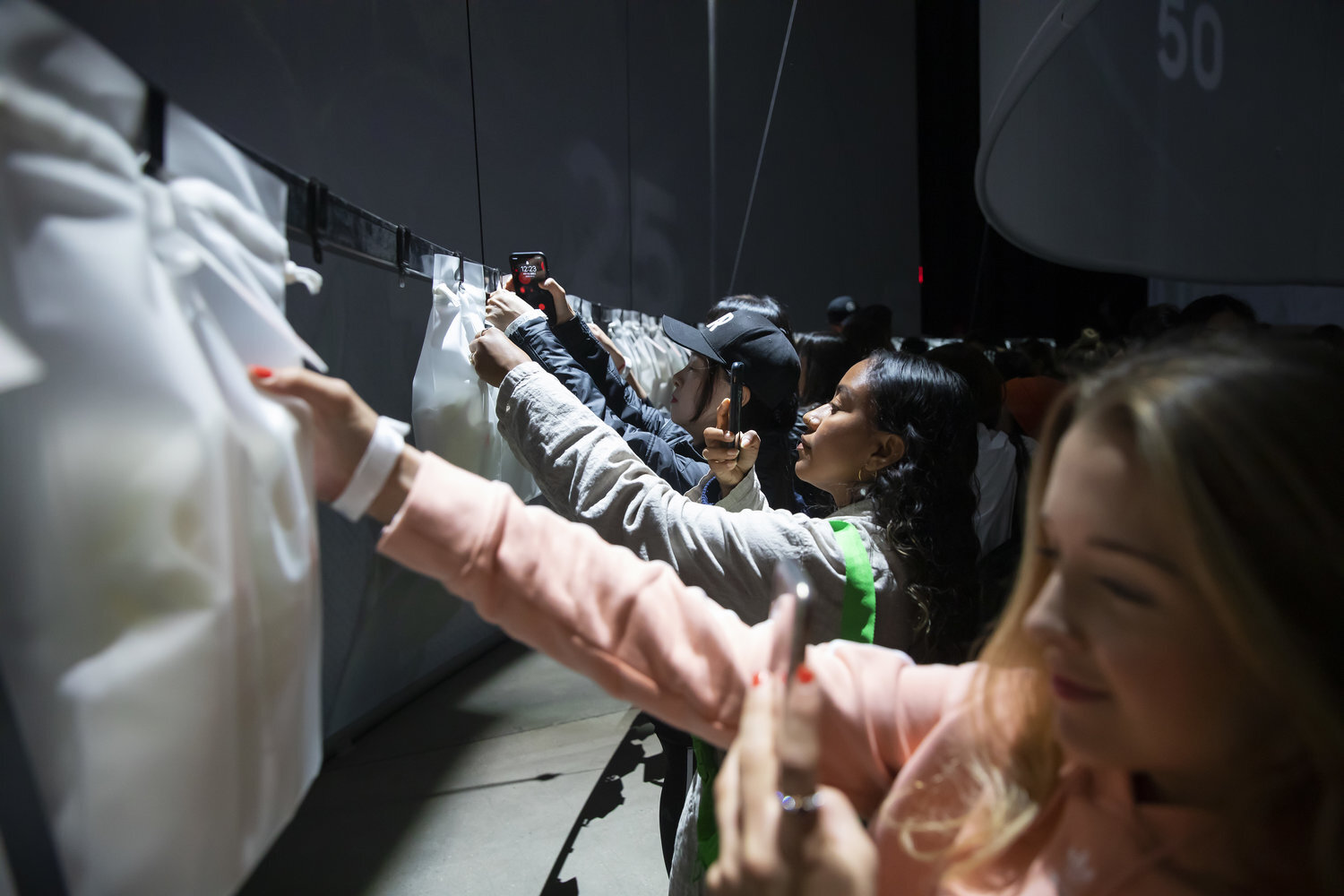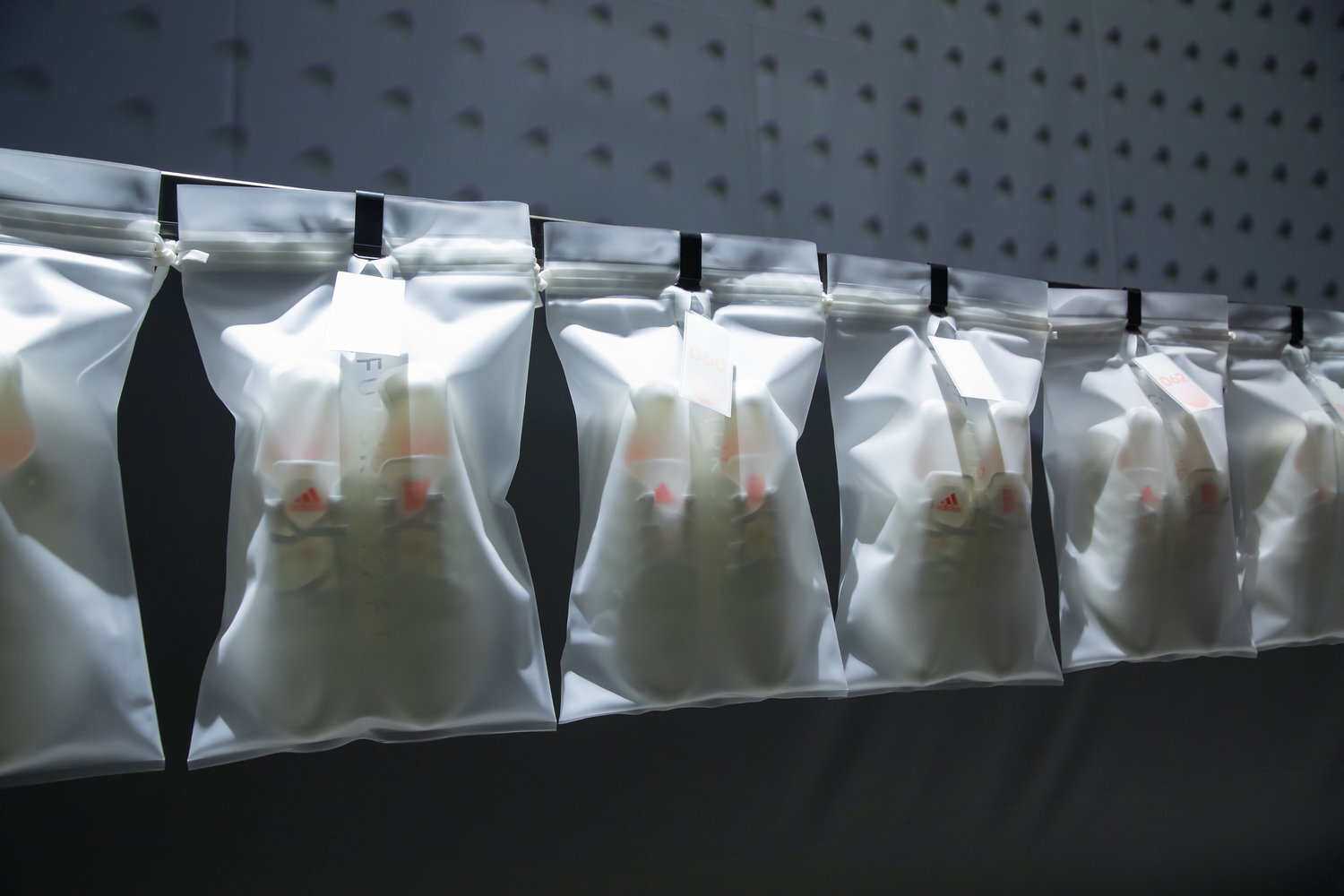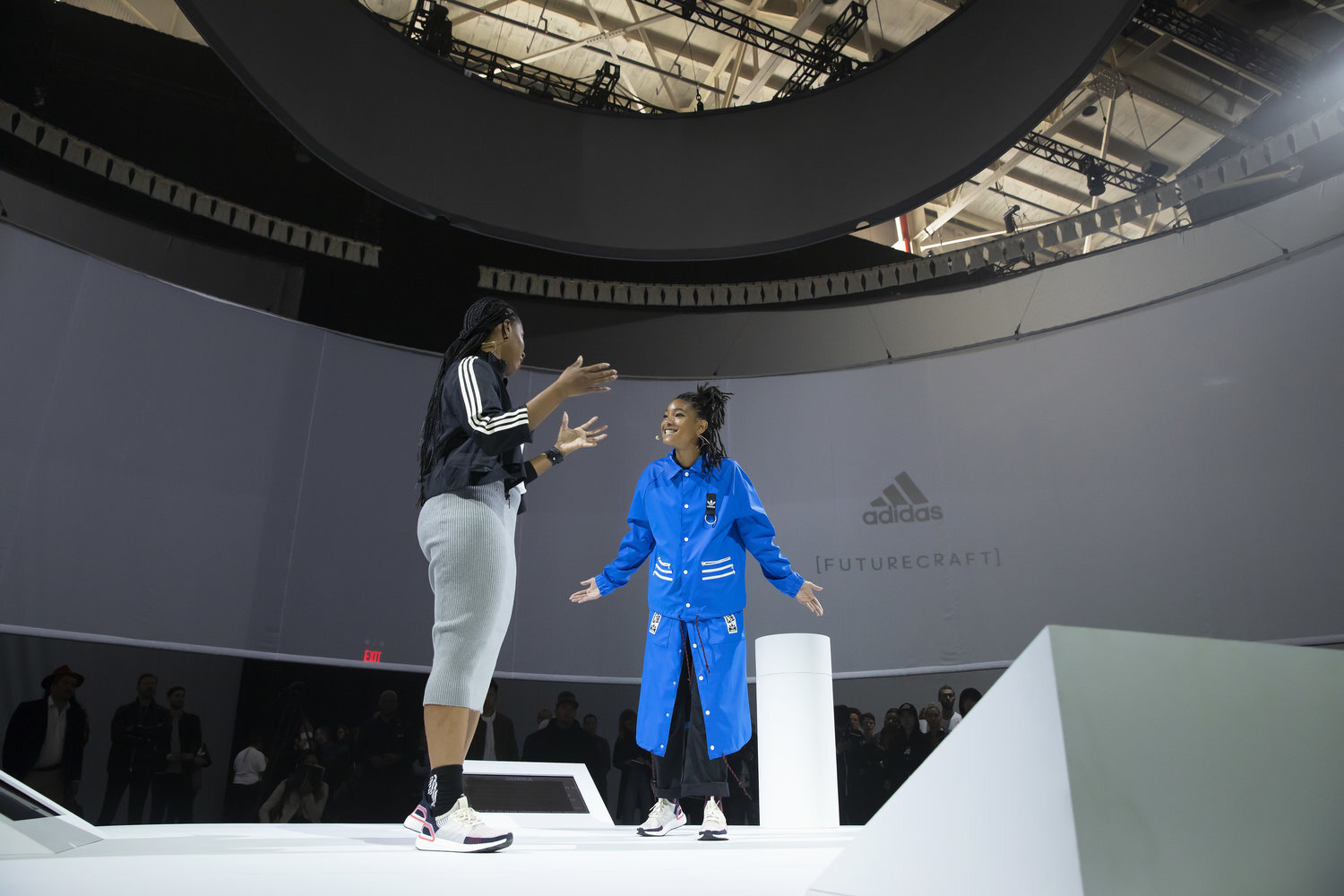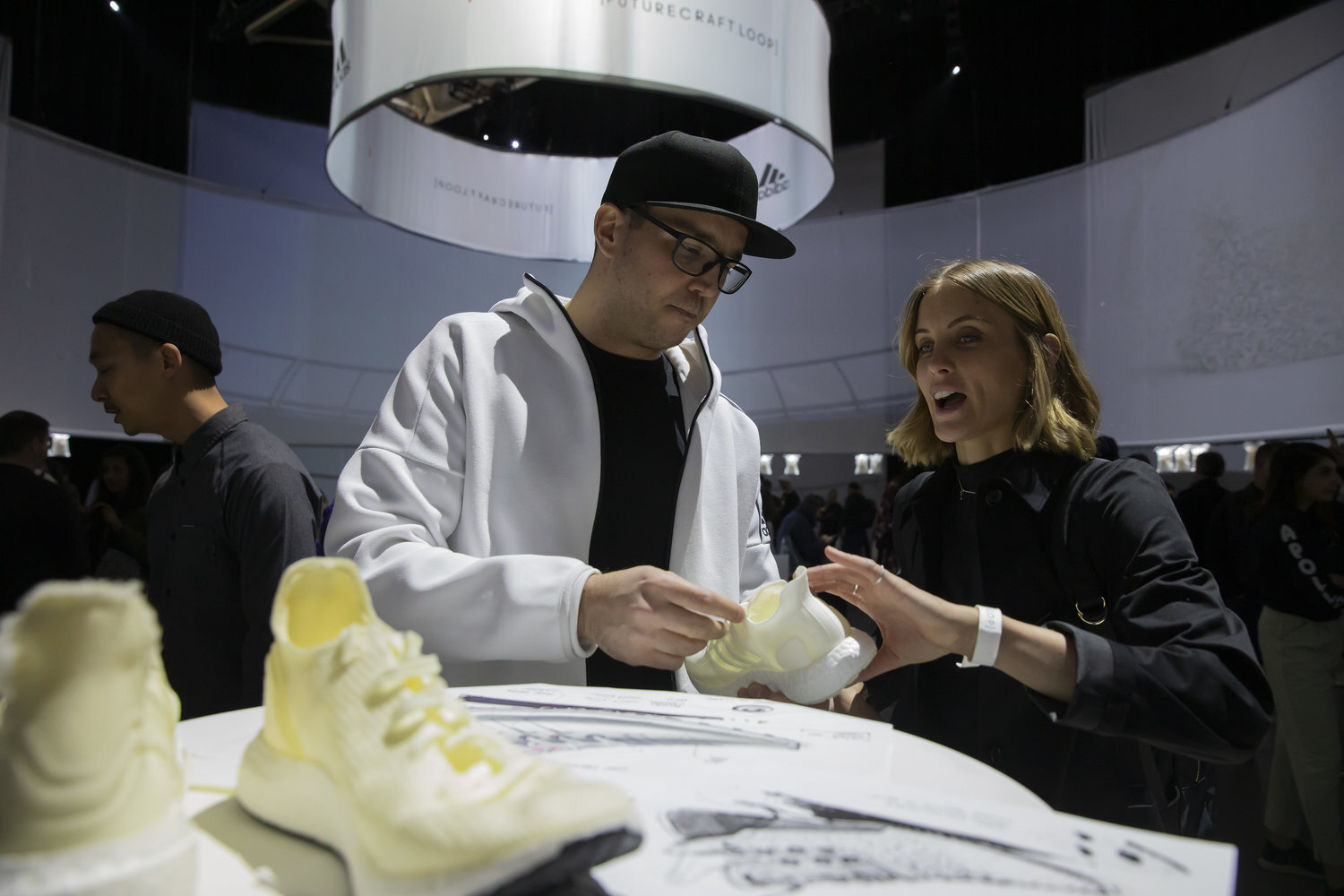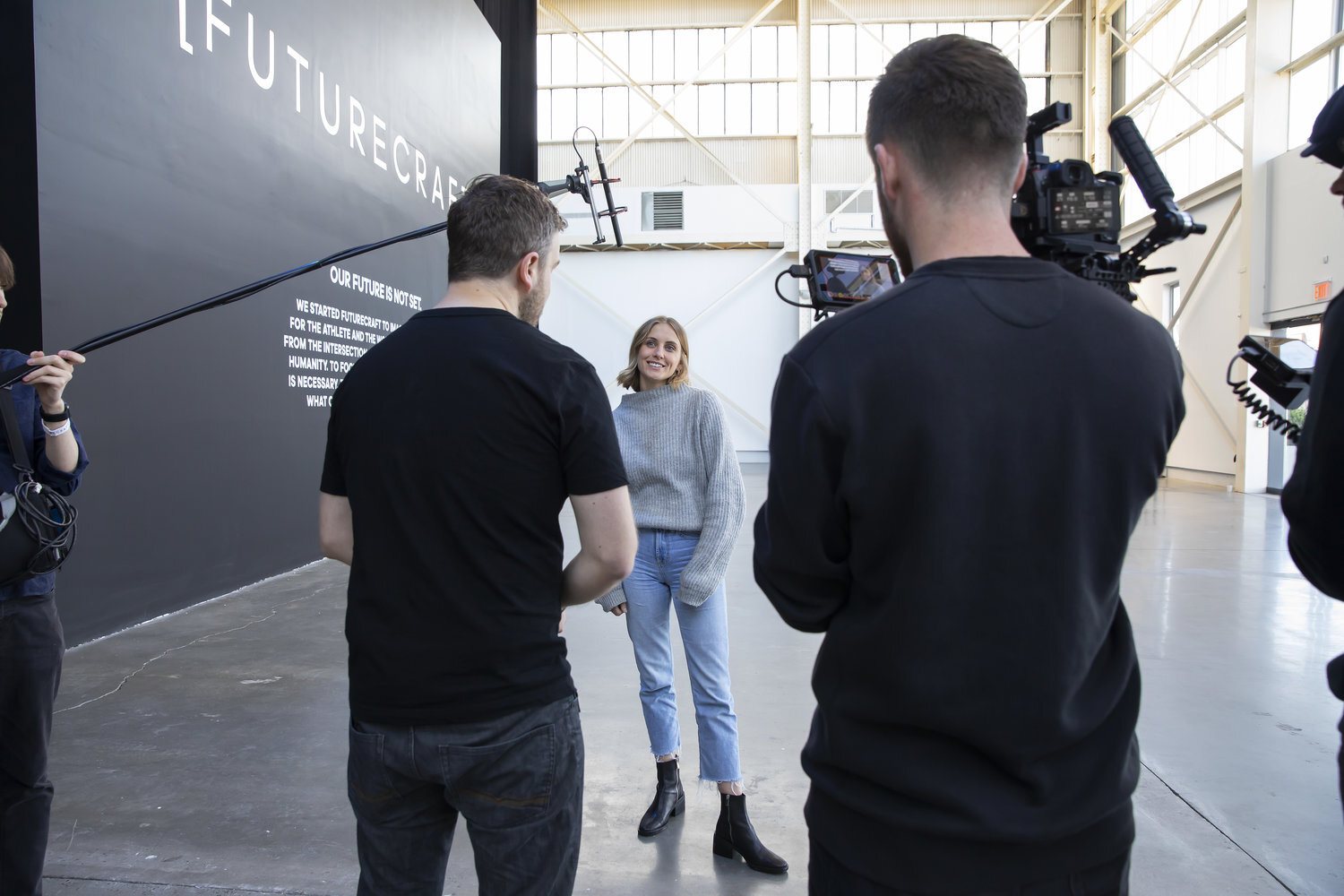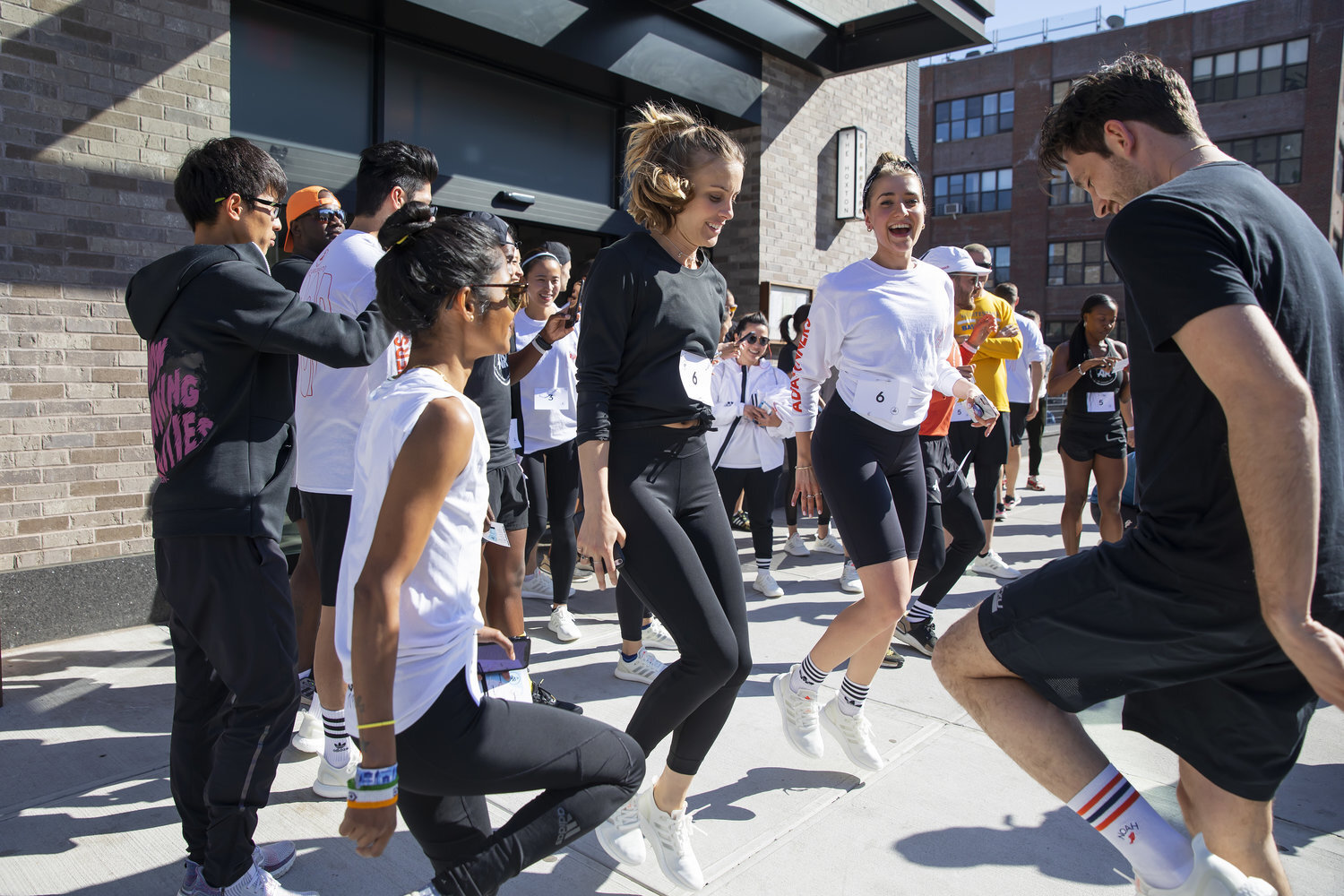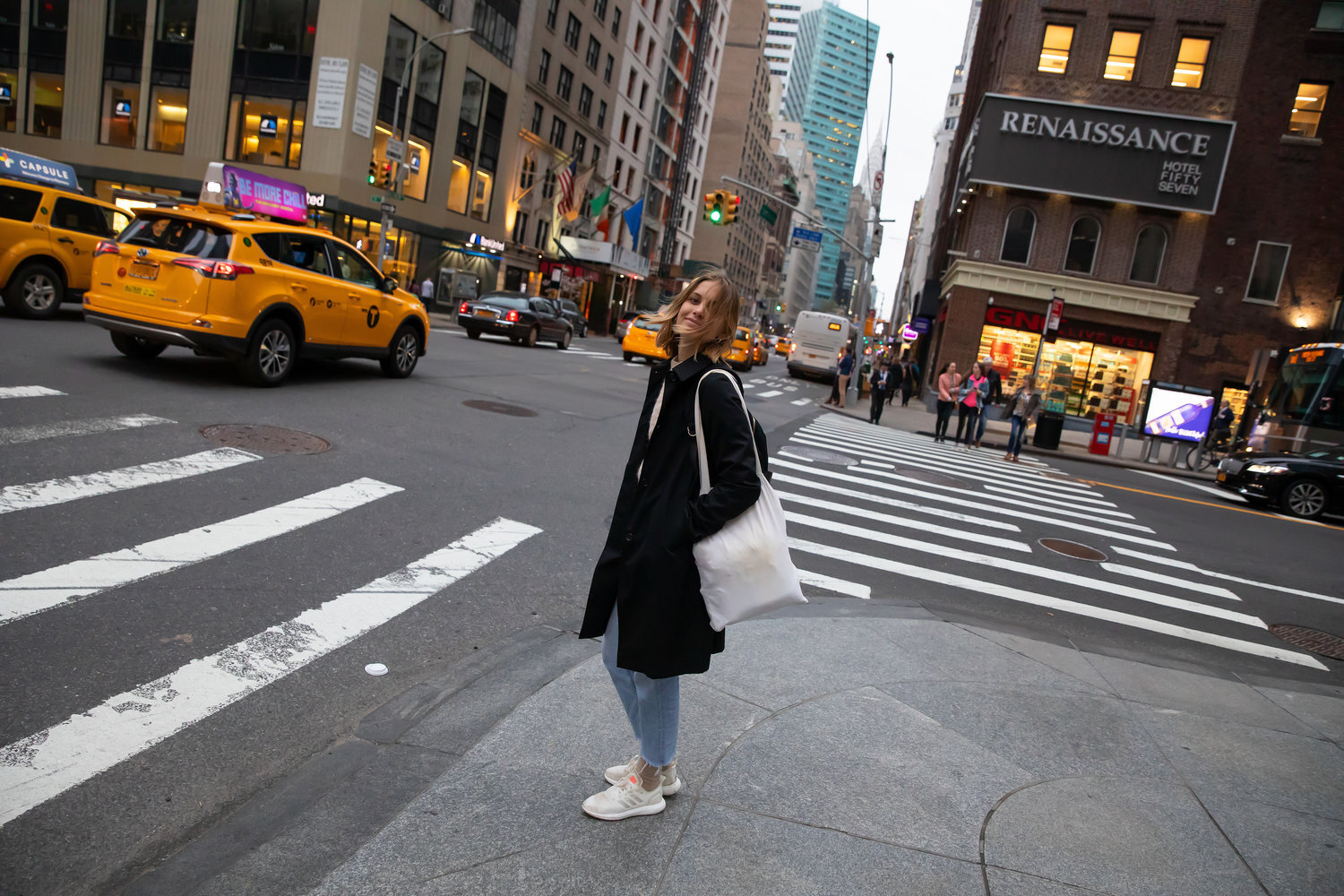The End Of Waste? // Adidas Futurecraft Loop
Running around Brooklyn in the new Adidas shoes. Photo: Jonny Weeks Photography
“First one to find a shoe wins!” I yell whenever I arrive at a beach. Along with tampon applicators, toothbrushes and other plastic waste, I seem to find odd shoes washed up on the shoreline so frequently that I've made it part of every beach-clean I do. It's actually quite concerning.
Most shoes are made of complex materials and glues which can only be down-cycled or thrown into landfill. It's a massive, global problem and thankfully manufacturers like Adidas are now seeking to tackle it.
Adidas has spent the past six years working towards a "100% recyclable" performance running shoe. The prototype is called the Futurecraft Loop – an all-plastic translucent runner which uses no glue and which, at the end of its wearable life, can be returned to Adidas so that it can be broken down and recycled into brand new footwear. Consequently there's zero waste – or to use Adidas PR lingo: "it's the beginning of the end of waste".
“We know we're part of the problem," said an Adidas spokesperson at the launch event in New York last week. "We buy; we use; we throw away. But there is no 'away'. Every piece of plastic ever made is still in existence somewhere on our planet, in our ecosystems, poisoning our earth. For the past six years Adidas has been working on a product that you’ll never throw away – a shoe that is made to be re-made.”
On face value I think they should be applauded for such an environmentally-conscious mission statement. But you can't always take things at face value.
The Launch
The shoes descending from the ceiling. Photo: Jonny Weeks Photography
I was one of 200 content creators and journalists who were invited to the global launch event and, as our new prototype shoes descended from the ceiling, I was feeling optimistic. The room was buzzing with excitement as we snatched the new footwear from the rigging, prised open the bags and hurriedly tried the shoes on.
At first they looked and felt like most other Adidas ultra-boost shoes, incorporating clean lines and simple styling, and my only initial complaint was that they seemed a little bit rigid and plasticky. So I quizzed a number of Adidas bigwigs over exactly what is new about these new shoes.
First up, I picked up a handful of small beads – from which the shoes are moulded – and asked what the beads are made of. "Each component is made from 100% reusable TPU (thermoplastic polyurethane)," I was told. "We've kept the shoes transparent [sic] because we want our whole process to be transparent and we want to see what happens to them when you wear them."
"But you're starting out with recycled TPU, right?" I double checked. "No," came the deadpan reply, "it's 100% virgin plastic".
I was stunned. Did they just say this supposedly ‘green’ shoe is made from virgin plastic?!
I followed up with a series of awkward questions, trying to wrap my head around things, but fell further into the rabbit hole when I was told the second generation of shoes, ie the shoes created from the mashed-up remnants of the first batch, will only contain 5% recycled plastic. The other 95% will be ... you guessed it ... more virgin TPU.
Let’s not forget, the basic raw material for virgin plastic is petroleum and/or natural gases, and the world’s oil supplies are becoming depleted. Couple that with the vast energy consumption used in sourcing, production, transportation and disposal (including recycling) of plastics, and you can start to understand why my default position is anti-plastics.
Rewind …
The new Adidas Futurecraft Loop, designed using translucent materials to capture “the colour of life” – which, apparently, is brown. Photo: Jonny Weeks Photography
I flew out to New York (I don’t fly without serious consideration regarding the pros and cons) for what I thought would be a ground-breaking launch in sustainable fashion, but I was beginning to realise Adidas was in fact launching more of a 'concept' shoe based around long-term ideals of waste reduction.
Their ambition was to create a closed manufacturing loop – a “zero waste” ecosystem in which the raw materials can be repurposed again and again. In other words, no part of these new shoes should ever end up in our oceans or in a landfill.
Credit where credit is due: that's a pretty neat achievement. But is there really no existing stream of recycled TPU that could be used in the beta trials to test its efficacy? Apparently not.
Yohan Ham, Director at Adidas Consortium, explains: “We had to start with virgin plastics because you’ve got to make sure the first product is very pure so that it’s not compromised material. There’s no other stream that exists that's as pure that could feed into our [first batch of shoes]. We’ve tried using post-consumer waste but we decided to create the whole eco-system for the beta phase to better understand it.”
Okay, I guess I can see the logic in that: a shoe made entirely from one material with no glue is significantly easier to recycle compared to our current, flawed recycling system processing mixed materials.
But I'm still not hugely impressed. If they’d handed me a 100% recyclable shoe made from 100% recycled materials – as other publications seem to have misinterpreted this shoe to be – I'd be loving it right now. Instead, they handed me a 100% virgin plastic shoe which still felt a little suffocating to my morals and, I should add, suffocating to my feet after a sweaty 5km run around Brooklyn with the Adidas team.
Core Values
Initial designs for a 100% recyclable runner. Photo: Jonny Weeks Photography
First up, I'm glad that Adidas have admitted there's a problem in their industry and they know they're a part of it – as the saying goes, ‘the first step of recovery is admitting you have a problem’ – but I can't avoid feeling that it's illogical to tackle the problem with the problem? There are so many alternative materials that don't harm the environment so considerably. Adidas already use recycled polyester, recycled rubber, organic cotton and tencel in other products such as their Parley shoes. Why are they not investing more in these earth-friendly materials? Adidas said they can’t make a performance running shoe from these materials, yet.
In my opinion there's a huge chasm between brands which have sustainability as part of their genetic make-up and brands which are joining the sustainability bandwagon – even those like Adidas whose motives seem quite genuine, or Nike who launched their Grind initiative to make use of their surplus waste.
For example, Patagonia is a brand with sustainability at its core: it offers free repairs for life, giving you clothes which you'll cherish for a lifetime even when they're old and covered in patchwork reconstructions. Meanwhile, Veja make shoes using fair trade organic cotton and wild Brazilian rubber instead of synthetic rubber (the word Veja is Brazilian for "look", meaning that we should look beyond the mere superficial qualities to see how exactly they're made). Similarly, All Birds craft shoes using natural materials such as tencel, a responsibly grown and sustainably harvested eucalyptus tree fibre, and sugarcane, a fully renewable resource which can be made into durable soles. Every step of their production process is environmentally conscientious.
Ultimately though, I wonder if consumerism and sustainability can really cohabit in a capitalist world? Through its proposed return-and-recycle scheme, Adidas could be inadvertently creating a new-for-old mentality, thereby still encouraging people to subscribe to 'fast fashion' (N.B. They're even asking us to return these shoes for recycling after only a month of wear to meet the project’s deadlines). I think what really needs to be addressed is consumerism itself and the rate at which we buy, buy, buy. We need to slow down and cherish what we have already. And don’t forget, the most environmentally sustainable pair of shoes you own are the ones on your feet and the best thing you can do is to care for and repair them.
But let's not get too despondent about things. At the end of the day, Adidas are not making any wild claims that this product is perfect and nor are they saying it's ready for public launch (it's not due to drop until 2021). What they are doing is starting a much-needed conversation and being fairly transparent about it – Adidas, Reebok and Patagonia were the highest ranking brands in this year’s Fashion Transparency Index. They have succeeded in creating a shoe that can be completely recycled, which is an immense outcome in itself and I’m certain that our future will heavily rely on companies such as Adidas being bold enough to invest in new technologies and willing enough to trial moonshot ideas such as this.
As their creative director Paul Gaudio put it: “We are not saying this product is the final solution. It's a statement of intent. We’re trying to make the world a better place.”
I can't lie: my brain and my feet don't love this current iteration of the Futurecraft Loop as much as I'd like them to, however I hope it's a step towards a brighter future.
• I will be planting 17 native trees with my friends at Hometree to offset the air-miles from this trip.
• I was not paid by Adidas nor did they have any editorial input in my review (as you can probably tell).
• All photos copyright Jonny Weeks Photography.


